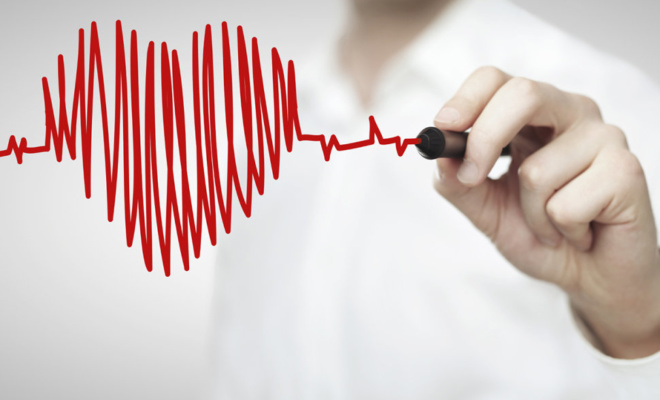
Health & Wellness
Atrial Fibrillation
by Dr. Kenneth D. Henson
Kenneth D. Henson, MD, FACC is certified by the American Board of Internal Medicine in Cardiovascular Disease (2013) as well as Internal Medicine (2014). He began medical practice in Sarasota in 1995 and is a former Chief of Cardiology at Sarasota Memorial Hospital.
Atrial fibrillation is one of the most common heart problems that cardiologists see in daily practice. Increasing age, high blood pressure, coronary artery disease, valve problems and an overactive thyroid may increase the risk of atrial fibrillation.
Atrial fibrillation is an irregular rhythm that starts in the upper chamber of the heart, known as the atrium. In a normal heart, the atrium collects blood returning to the heart and then pumps it through a valve to the lower chamber, known as the ventricle, which then pumps the blood back out to the body. When the heart is in a normal rhythm, the upper and lower chambers are synchronized and blood flows briskly. In a normal heart the rhythm is perfectly regular, like a clock or metronome. With atrial fibrillation, the atrium no longer beats regularly; instead, it quivers (fibrillates). The ventricle does not get its regular signal to contract and therefore beats in an irregular or chaotic pattern. Most importantly, atrial fibrillation causes the blood to stagnate in the atrium. This stagnation can lead to clot formation and increase the risk of stroke. Strokes from atrial fibrillation are often fatal.
There are many options for treating atrial fibrillation, but the most important initial treatment is anticoagulation with blood thinners. Cardiologists use a simple formula known as a CHADS2 score to estimate the risk of stroke. With a score of zero, aspirin is adequate. Higher scores may require more potent blood thinners. For many years, Coumadin was the only oral blood thinner available. While Coumadin is effective, it has drawbacks, including the need for frequent blood draws and multiple interactions with drugs and foods. On a positive note, Coumadin is rapidly reversible in the event of bleeding. Newer blood thinners like Apixaban and Rivaroxaban do not require frequent blood monitoring. Both are effective at preventing clots and reducing stroke risk, but they are not rapidly reversible. Dabigatran, a similar drug, is now reversible. In selected patients, a device known as a Watchman may be implanted using a minimally invasive technique to prevent clots and reduce the need for blood thinners.
Many patients with atrial fibrillation are asymptomatic. In these individuals, protection with blood thinners and simple medications to slow the heart rate may be the only treatment needed. Symptomatic patients may benefit from restoration of a normal rhythm, which may involve rhythm-regulating medications. Antiarrhythmic medications may require a hospital stay for safe initiation. In some cases, an electrical shock, known as a cardioversion, may be used to return the heart to a normal rhythm.
For patients who cannot tolerate medication or who return to atrial fibrillation despite medical treatment, a minimally invasive, non-surgical procedure known as ablation or pulmonary vein isolation may help restore rhythm. The procedure uses either a radiofrequency or cryogenic probe to “burn” or ablate the area in the heart that causes atrial fibrillation. When successful, ablation is a cure and eliminates the need for ongoing medical treatment in many patients.
Atrial fibrillation is a complex problem with many treatment options. Choosing the right treatment for an individual patient requires a thorough knowledge of their medical history, diagnostic studies, lifestyle and personal preferences.
Culp-Henson Private Cardiology and Internal Medicine is located at 1250 South Tamiami Trail, Suite 201 in Sarasota. For an appointment, visit culphenson.com or call 941.929.1039.






You must be logged in to post a comment Login